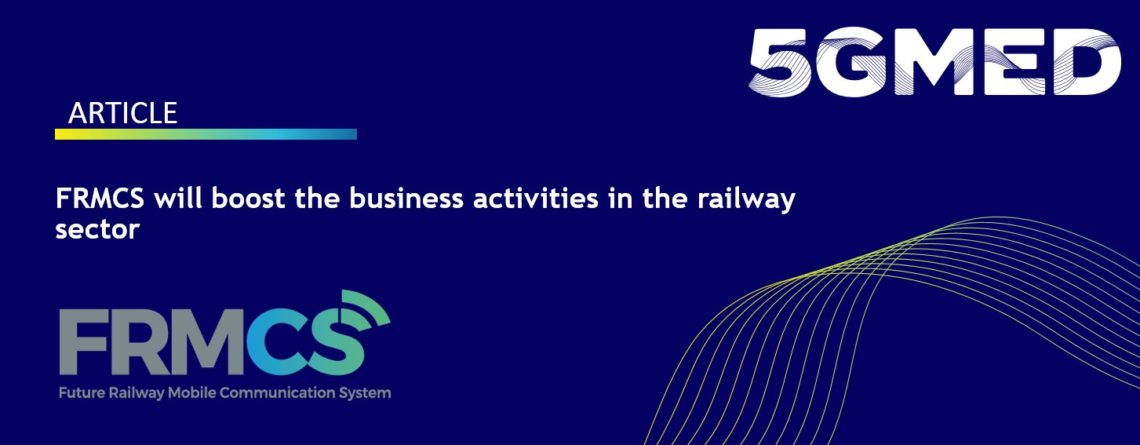FRMCS will boost the business activities in the railway sector
The European railway sector is about to leave some important transformation in the coming years thanks to the investment that will be made to grow the passenger population and to transform the image of this mode of transportation. In addition, the last updates in technology and the installation of the 5G across Europe will also contribute to the growing business. The FRMCS will have a critical role for the MNO to become potential clients of train operators, but it will not be the only sector to benefit from the digitalization of the railway.
2021, the European year of rail: green transition and 5G
The European Commission (EU) has declared 2021, the European year of rail. There is no doubt that for the railway sector considered as the European and cultural heritage, it is an opportunity to get back under the transport sector spotlights. The European Green Deal (2019-2024 priority) within its Sustainable and Smart Mobility Strategy adopted last December will give the chance for the industry to be rediscovered as a transport mode and to be promoted as a sustainable, affordable and comfortable way of traveling. The main goal is to boost passenger and freight rail transport and to reduce up to 90% of the transport emission by 2050 but also to work on a more efficient European rail network with seamless mobility across borders.
Since the climate emergency has been declared, sustainability has become the protagonist of almost all the European Commission’s plans. A sustainable world can be built and new technology like 5G could help to do so. This is the reason why more than 70 million euros will be allocated to eleven 3-year projects focused on connected transport. The 5G public-private partnership projects will worth more than 400 million euros of EU funding, leveraging far more than €1 billion of private investment and reinforcing Europe’s leading position in this field. A variety of stakeholders will be involved in the journey according to the EU:
“[…] telecom operators and vendors, road operators, rail infrastructure managers, transport and logistic companies, vehicle manufacturers and their equipment suppliers, railway equipment manufacturers, innovative SMEs, and public and private research centers, with the direct participation of transport authorities and the support of national and regional national governments.”
The Future Railway Mobile Communication System, more than a business opportunity
5G for the railway sector will definitively bring many advantages and improve services on-board, such as the management of the data flow, the end of low-latency, the real-time updated access for passengers as much as for the technicians, conductors, and other railway works, etc. 5G will be a new sales space, where products that do not exist yet will be launched. It is also a new workspace, with possibilities for monitoring and operating objects and assets. Beyond the marketing possibilities, it is also the rise of the internet of things.
The future of railway mobility and the key to digitalization of the sector is the Future Railway Mobile Communications System which is defined as the deployment of a new standardized system to take over GSM-R. The success story covers more than 130,000 km of lines but is about to reach its limits. To replace the obsolete system, the Commission invested almost 500 million euros between 2007 and 2013. The FRMCS through the 5GMed project, which wants to design 5G neutral infrastructure and tools, will enable the improvement of safety and operational efficiency, support innovative passenger services and accelerate the digital transportation: Transition of a commercial train between ADIF in Spain and SNCF in France, advanced applications in cross border situations. On-board media server will offer a seamless service continuity, coping with multiple media types, service QoS requirements, handover between service orchestrators, and edge network transitions. FRMCS services in the train will be connected to the 5GMed infrastructure and satellite. A bandwidth manager device will enable the transition and aggregation between the different available connections.
With On-board 5GNR network, the mobility sector and the telecom sector become potential clients: train and railway operators, train manufacturers, MNOs, neutral hosts, telecom vendors, telecom infrastructure providers, 5G service providers, telecom operators, and satellite operators could all benefit of adopting the new system. In the ICT sector, there are also many stakeholders that will be able to exploit the digitalization of the sector with advantages for the railway technology players, Mid-Caps and SMEs, as well as software professionals providing services and technology-based on 5G and AI, IoT, Cloud, Blockchain, and Cybersecurity.
In the upcoming years, the 5G and AI technologies will have an extraordinary impact on the railway sector at a technical level. From a business point of view, many sectors have the possibility to be involved in the upcoming modernization of the industry. It will be interesting to follow how the European Commission’s investment will impact the economy of the countries that will adopt the new standardized system.


